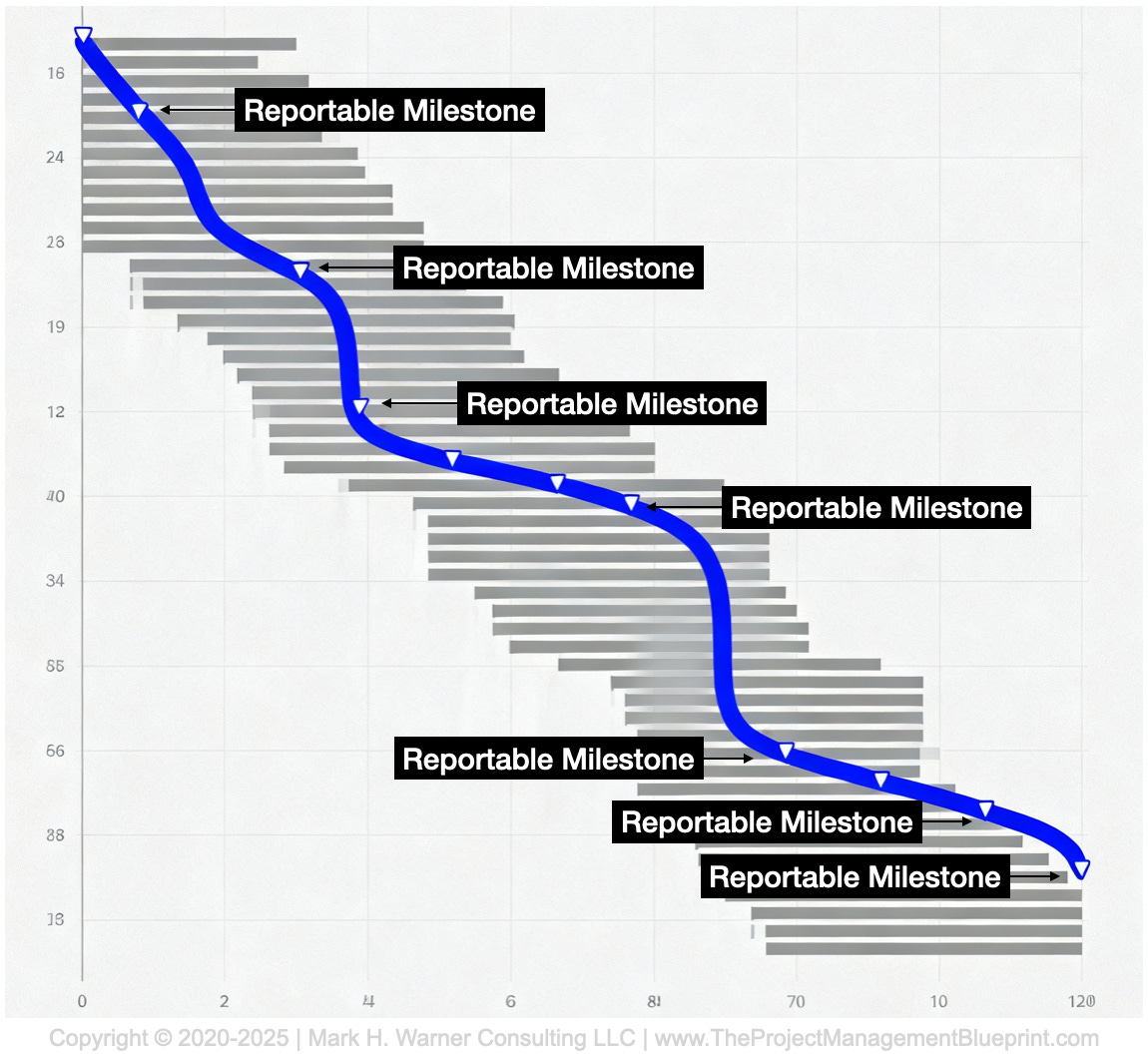Project Diary: Signposts of Success
Establishing Level-1 Reporting Milestones
Level-1 milestones—sometimes called “reporting milestones” or “upper management gates”—are progress markers that tell key stakeholders at a glance how a project is advancing. These aren’t the hundreds of granular elements buried deep in a detailed project schedule. Instead, they’re carefully selected, high-visibility checkpoints that represent significant accomplishments or decision points along the project journey.
For a design project like ngGONG, typical Level-1 milestones include events such as completing major trade studies, finalizing high-level science requirements, forming key working groups, hiring critical team members, or passing formal design reviews like the Conceptual Design Review (CoDR) or Preliminary Design Review (PDR). For a traditional construction project, L1 milestones might be site groundbreaking, foundations poured, completion of the building shell, or the beneficial occupancy date. Every project is different, but they all have key points where meaningful progress is recognized; i.e., tangible achievements that move the project closer to its goal, and, just as importantly, let the key stakeholders know that the project is hitting its marks.
The NSF requires projects like ours to establish L1 milestones and then to report on them monthly, tracking not only their planned completion dates but also their current status within the schedule. Have they slipped? If so, by how much? This ongoing tracking becomes part of the yardstick against which project performance is measured and reported.
Why Level-1 Milestones Matter
In any large, complex project, key stakeholders need visibility into progress without drowning in details. Level-1 milestones provide that high-level view. They answer the fundamental question every sponsor, oversight board, and funding agency wants to know: “How’s the project doing? Is it on track?”
These milestones also serve an important internal function. They help the project team maintain focus, prioritize work, and celebrate tangible achievements. When a milestone is met, it signals momentum and builds confidence. When a milestone is at risk of slipping, it signifies a type of early warning alarm that allows the team to mobilize resources, adjust plans, or escalate issues before they cascade into larger problems.
How We Select and Establish Milestones
The process of establishing Level-1 milestones begins with the project team identifying major deliverables, decision points, and key events throughout the project lifecycle. For ngGONG, we started by mapping our 10-step Project Management Blueprint process onto the NSF Research Infrastructure Guide requirements, identifying natural inflection points where significant work packages conclude or major reviews occur.
Once we drafted a preliminary list, we shared it with senior leadership and key stakeholders for feedback. This collaborative approach ensures that the milestones are meaningful not just to the project team, but also to those who will track progress and make decisions based on our reports. After internal discussion and refinement, we’ll submit the proposed milestones to the NSF for review and approval. There may be some back-and-forth negotiation. Perhaps the NSF wants additional milestones in certain areas, or finds some of ours too granular or not granular enough. Once approved, these milestones become part of our baseline and will be tracked and reported on in every monthly report going forward.
A best practice is to space milestones at an approximately equal cadence. In the old days, the NSF was content to see 1-2 L1 milestones per year of project; now they’d like to see 3-5 per year. You should also select milestones that fall on or near the project’s critical path—the sequence of activities that directly determines the overall project duration; if one of these is missed, the entire project timeline is likely to slip. By monitoring critical-path milestones closely, project managers gain early visibility into schedule risks and can take proactive corrective action.
Example from the ngGONG Project
For ngGONG, our proposed Level-1 milestones span the entire design phase and reflect the progressive development of our solar observatory network. Early milestones include the formal start of our Period of Performance, formation of the Science Working Group, and completion of the high-level Science Requirements Document (SRD) and Operational Concept Description (OCD) under revision control. Hiring milestones, such as hiring our first post-baccalaureate interns, are also included, recognizing that assembling the right team is foundational to success.
As the project progresses, milestones shift to design and technical accomplishments: drafting systems-level requirements, completing concept designs for major subsystems (telescope assembly, instruments, high-level software, data management systems, site-buildings-infrastructure), and completing major trade studies. Key design reviews (CoDR and PDR) serve as major gates where progress is formally assessed and designs are validated before moving forward. And so on.
Each of these milestones has a planned date and will be tracked in our monthly reports. A standing table will show the milestone name, its baseline completion date, its current forecasted date, and any variance. This transparency keeps everyone informed and accountable.
The Bottom Line
Level-1 reportable milestones are more than bureaucratic checkboxes—they’re strategic signposts that guide the project and inform stakeholders. By handpicking milestones that represent actual progress, align with the project’s critical path, and reflect stakeholder priorities, we create a powerful tool for tracking performance, managing risk, and building confidence.
As we complete our milestone list this week and submit it to the NSF (once the government shutdown ends, that is), we’re not just satisfying a reporting requirement; we’re laying down a roadmap that will help keep the ngGONG project on course for the next several years. Each milestone achieved will be a step closer to delivering the next generation of solar observing capability, and each one will be a story worth sharing in this ongoing diary.



